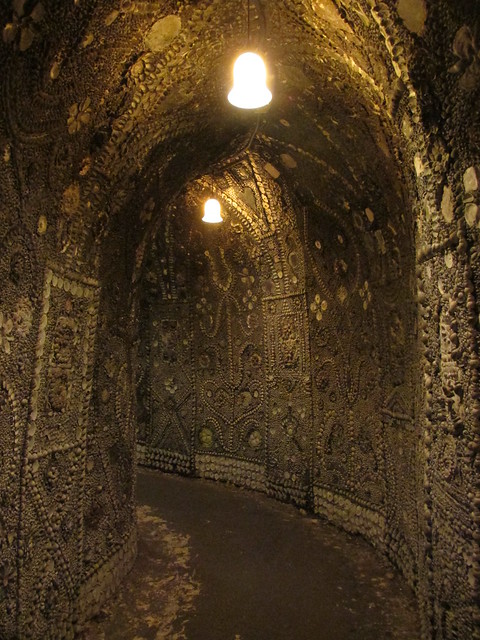 |
| A view down the tunnel |
This is just one of the weird things about the 104 feet long tunnel in Grotto Hill. The grotto takes the form of a winding passage that splits into two, forming a circle, then ending with a square space called the altar room. At the point where the path splits the ceiling rises to a dome with a gap at the top that allows some natural light to enter.
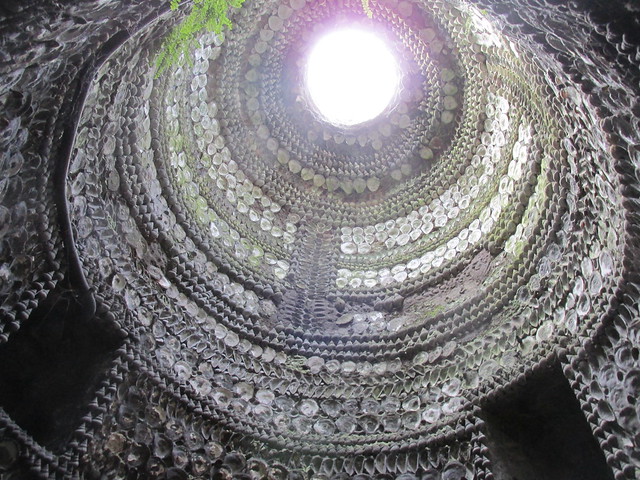 |
| Looking up into the dome |
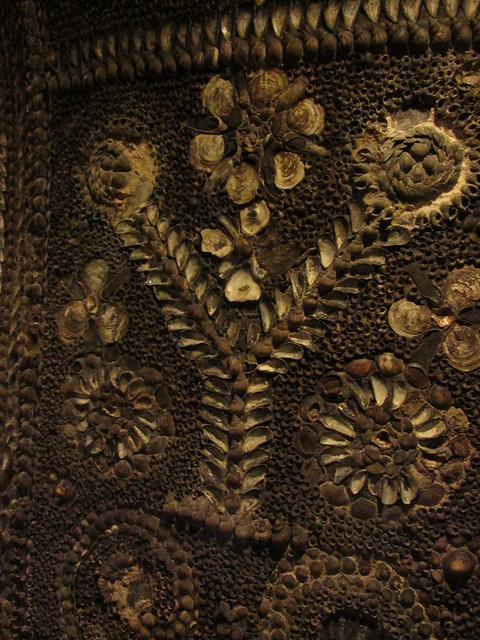 |
| Detail from the Aries panel |
According to local legend the grotto was discovered in 1835 when local landowner James Newlove decided to dig a duck pond. His son Joshua found a strange hole in the ground and James lowered him through it to see what lay beneath. The boy reported seeing pictures and a cave. Estimates of its age vary from several thousand years, to Victorian folly.
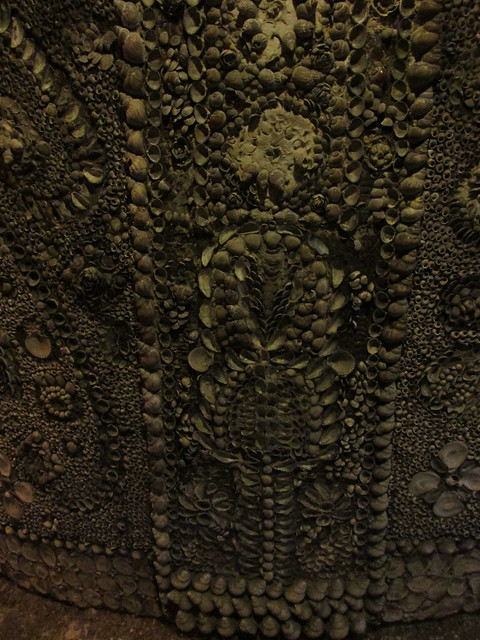 |
| Part of the 'skeleton' panel |
Other ideas have included the suggestion that the site was prehistoric; it might have been a Templar Chapel; or Newlove built the tunnels himself. Whatever the truth, the grotto became a tourist attraction within a couple of years, earning Newlove a considerable income.
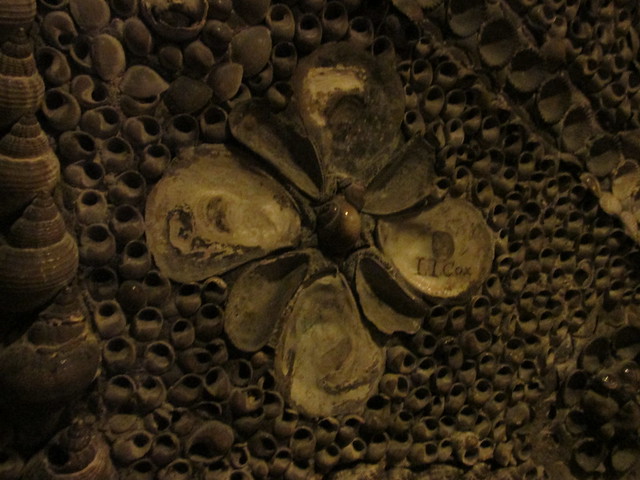 |
| Detail of a pattern - with old graffiti! |
It's been open to the public ever since, and it recently underwent a programme of restoration to prevent water damage. A new project was launched in 2012 to replace missing 'roundels'. Some parts of the patterns were created by fixing them to circles of slate, which have since fallen away. Those slates are now being repaired.
Now drop by Tricky's FAST blog to see other Five on Friday posts.
I have been looking forward to seeing the Grotto after seeing your pictures last week. It is even more mysterious and magical than I imagined. It is difficult to comprehend the scale of it and how long it must have taken, not to mention who created it. Wondeful, thank you for sharing.
ReplyDeleteWow what a beautiful place to visit! So mysterious. I wonder what story is true? Thanks for sharing.
ReplyDeleteWow! I can't think of anything else to say! Just amazing! Happy Friday!
ReplyDeleteWhat a strange place, would love to know its true history.
ReplyDeleteFascinating story and pictures. If he created it himself, you'd think he would take the credit for such a beautiful site. Thanks for sharing. Truly truth is stranger than fiction.
ReplyDeleteAssuming it took a average of 60 seconds to install each of the 4.6m shells, (which considering the complexity of the patterns it would be reasonable to assume it probably took longer than that to select, position and fix each shell!) that would mean that if he worked 12 hours a day EVERY SINGLE day it would have taken him 17.5 years to complete, and that does not allow for any time to source and transport materials or take any breaks :o
ReplyDeleteIf you figure in those things and taking weekends off/ sick days etc it would likely have taken twice as long, so I think we can rule out him creating it himself unless he had been suspiciously absent for around 35 years!
Thanks for joining in this week with Five on Friday, hope you had a great Bank Holiday Weekend :)
I hadn't even considered doing the maths! That's very impressive calculating. (I'm a wordsmith - I don't do numbers.) I doubt if he'd have been able to disappear for 35 years!
Delete